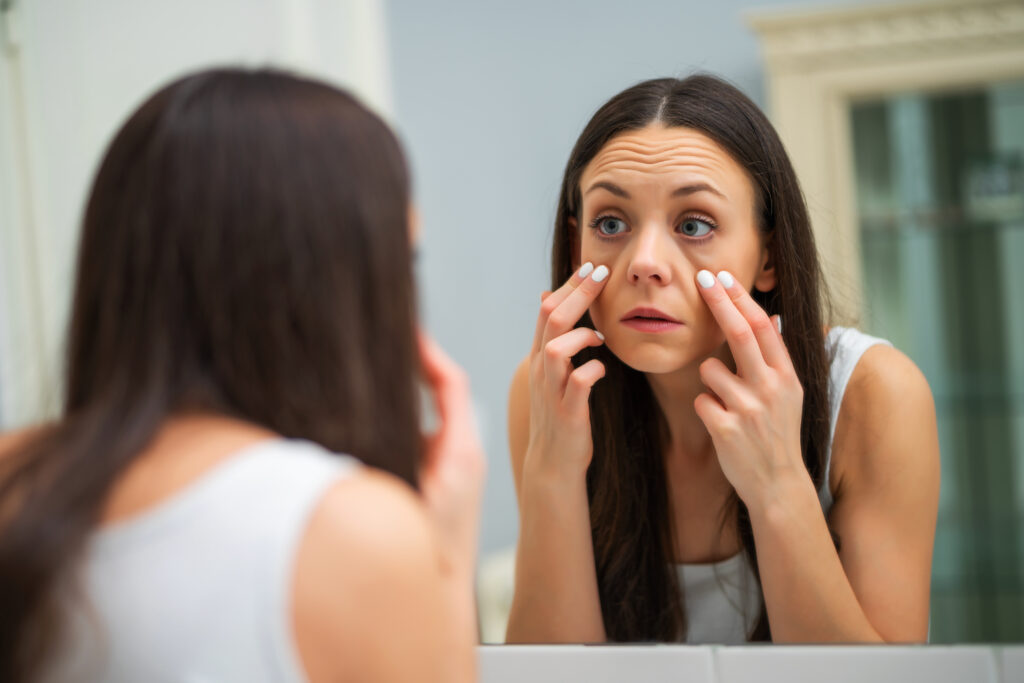
Whether you have upper eye bags or lower eye bags, the right surgical procedure can restore your youthful look. The results of blepharoplasty usually last for years.
Surgery to remove eye bags is a quick, relatively painless process that can be done under local anesthetic or light sedation. Other options include chemical peels, laser treatments and injectable fillers.
Chemical Peels
A chemical peel is a common cosmetic procedure that can help reduce the appearance of fine lines and wrinkles around the eyes. The treatment uses mild acids to dissolve the top layer of skin, triggering the production of new, smoother skin cells. A peel can also decrease the appearance of dark spots and uneven skin tone.
A peel targets two layers of the skin, the epidermis and the dermis. The epidermis is the outermost layer that covers the nerve endings, sweat glands and hair follicles. The acid in a peel will only remove a controlled amount of epidermal skin cells, so it does not affect the deeper nerves and blood vessels that lie beneath the surface.
However, a chemical peel will not eliminate the fat pads that form eye bags. A surgical procedure called lower blepharoplasty is more effective for reducing this condition, as are other surgical and nonsurgical treatments such as AGNES. A blepharoplasty can be quite expensive and requires significant downtime.
Lasers
In addition to removing eye bags, lasers can help tighten skin and reduce wrinkles in the surrounding area. This is a minimally invasive procedure that requires no downtime and works to reduce laxity by stimulating the body’s natural collagen production.
The first step is to numb the eye area with local anesthesia. Then, an optical fibre is inserted into the eyelid and light energy is emitted from it. The laser heats the tissues to melt away the excess fat cells and tighten the skin.
Blepharoplasty surgery is a surgical procedure that removes excess skin and bulging fat from the lower eyelids to smooth the area. It can be performed on the upper or lower eyelids and offers long-lasting results. The procedure is very popular for people who want to look more youthful and rejuvenated. Patients can experience some swelling, bruising and dry eyes following the procedure but these side effects usually disappear in a few weeks.
Injectable Fillers
For people with mild under eye bags, fillers can camouflage the hollow area and soften the transition from lower lid to cheek. It’s important to note, however, that if too much filler is used it may accentuate the puffiness and exaggerate the appearance of eye bags. In such cases, a special enzyme called hyaluronidase can be used to dissolve the excess filler.
Injectable fillers use a gel-like substance that is made from hyaluronic acid, a natural material found in the body. This product is biodegradable, which means that it breaks down and is naturally absorbed by the body over time.
Before the procedure begins, your doctor will mark and sterilize the injection area, then apply a numbing cream to prevent any pain or discomfort. Then, a needle or blunt-edged cannula will be used to pierce the skin and inject the dermal filler. Most patients experience slight swelling and bruising after the treatment, but this usually clears within a few hours.
Blepharoplasty
Blepharoplasty (BLEF-uh-plas-tee) is a surgical procedure to remove excess skin around the eyes and improve your appearance. Eyelid skin stretches and muscles weaken with age, causing loose upper and lower eyelids that make you look older or tired. Excess fat accumulates under the eyes, causing puffiness or bags. Blepharoplasty reduces these problems and tightens the skin to give your face a younger and more rested appearance. It can also make you appear more alert and energetic.
Some people have droopy eyelid skin that is so severe it interferes with their vision. This condition is called ptosis. A functional blepharoplasty can correct this problem, and it may be covered by medical insurance if the doctor determines it is necessary for your health or wellbeing.
Cosmetic blepharoplasty is not designed to lift the eyebrows, correct deep wrinkles or eliminate dark circles under the eyes. It can, however, be combined with other procedures to achieve these goals. For example, laser skin resurfacing can be performed at the same time as a blepharoplasty to smooth fine lines and wrinkles or stimulate collagen production.





